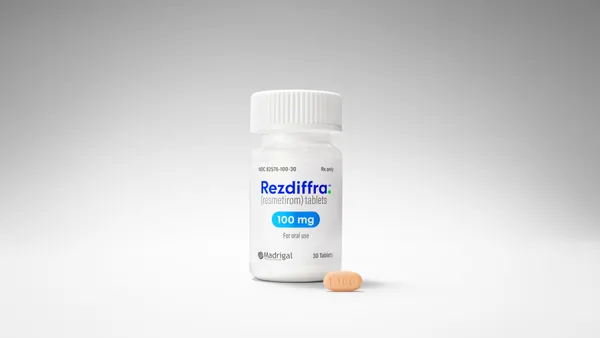34 September 2008 VIEW on Marketing PATIENTCENTRIC MARKETING To quote C Everett Koop, M.D., the former U.S. Surgeon General, “Drugs don’t work in patients who don’t take them.” The high level of nonadherence in the U.S. today poses a major obstacle to achieving optimal health outcomes for patients and a significant challenge for the pharmaceutical industry as well as other involved stakeholder organizations. While it is clear that the industry does care about nonadherence and is spending money to address it, the sad fact is that this investment may at best be ineffective and might even be counterproductive. Early attempts by the industry to tackle nonadherence have focused on patient education, prescription reminders and incentives. While these have had some shortterm successes, they have done little to address the deeper issues of nonadherence. One reason is that people who sign up for a nonadherence program are more than likely reasonably adherent to begin with. These “hand raisers” are quite definitely not the major problem. The major problem lies with the “nonhand raisers” and the reasons why they do not initiate or why they quickly fall off medication regimens. Generally speaking, about 20% of patients will consistently comply with a medication regimen if their physician asks them to and another 20% will remain stolid nonadherents no matter what steps are taken. It is extremely hard to move these two groups away from their core behavior. The other 60% of patients present an opportunity to really pursue individual causes of nonadherence and to find solutions that effectively change the behavior of potential nonadherents. One Size Doesn’t Fit All Because patients differ so markedly in individual behavior, it is important to segment them effectively before designing an adherence program for any particular product. Through carefully structuring early patient dialogue, patients can be divided into subgroups according to tendencies centered on adherence, each with a separate pathway through the program. Weak adherence programs typically focus on only one barrier, such as tools to combat forgetfulness with blanket reminders, and so are not applicable to all patient subgroups For example, if emotional factors are largely responsible for nonadherence, reminder programs will be completely ineffective. 1 By tailoring the adherence strategy’s approach to each patient segment, the program is more likely to be effective when complex sets of behaviors exist over extended periods of time, particularly in situations where patients have chronic conditions — for example, asthma, hypertension, diabetes and osteoporosis — that require significant lifestyle changes and longterm commitments. Tailored strategies allow intelligent allocation of resources to patient segments that are more likely to respond more positively. 2 Return on Investment (ROI) — Program Design While the pharmaceutical industry increasingly recognizes the importance of adherence support for patients, a nagging doubt lingers about the ROI that such programs yield compared with other marketing initiatives. If we accept the 202060 rule described above, then clearly the ROI is only as good as the program’s ability to reach the 60% before they take a nonadherent turn. Most programs attract the handraisers (20%) who are already compliant and will stay that way. Few programs effectively capture the 60% and fewer still have a customized response to the different challenges experienced by this group. Unless a program can identify and respond to each of the patient subgroups cited above, a huge percentage of patients will be excluded from successful participation and results will be garnered from the few barriers or single barrier that are addressed. Herein lies the problem with many adherence programs: isolating and addressing only a small subset of adherence issues significantly impacts ROI. Patient feedback programs have proven remarkably effective at improving adherence and offer the capability for customization for the brand and individualization for the patient. Consistent impact on Nrx radically improves an adherence program’s ROI while individualization offers broader access to individual patient challenges. These programs are extremely versatile regarding patient onramps, since multiple delivery vehicles can be used to stimulate an initial patient connection. Early results from adherence specific deployment of patient feedback programs indicate a capability for radically improving patient adherence, accelerating and amplifying ROI. InfoMedics, Inc. and NCPIE INFOMEDICS, INC., is a pharmaceutical services provider that delivers clear, actionable patient feedback to physicians about their treatment experience. For more information, visit infomedics.com. NCPIE is the nation’s leading authority for informing the general public and health care professionals on safe medicine use through better communication. For more information, visit talkaboutrx.org. Notes: 1 Bates, Andree Ensuring Profitable Patient Adherence Programs: Using Analytics to Release the Hidden Value in Brands; 2: Frost and Sullivan. The Evolution of Patient Adherence Programs: Moving from Mass Market Relationships to a Personal Approach, A Frost and Sullivan Whitepaper. Because patients differ so markedly in individual behavior, it is important to segment them effectively before designing an adherence program for any particular program. Stanley Wulf, M.D. VP, Chief Medical Officer, InfoMedics W. Ray Bullman,M.A.M. Executive VP, NCPIE Building a Better Adherence Program To access a FREE Podcast on The PharmaPhysicianPatient Connection: Working Together to Increase Adherence, go to pharmavoice.com/podcasts.
An article from


Building a Better Adherence Program
Filed Under:
Commercialization









